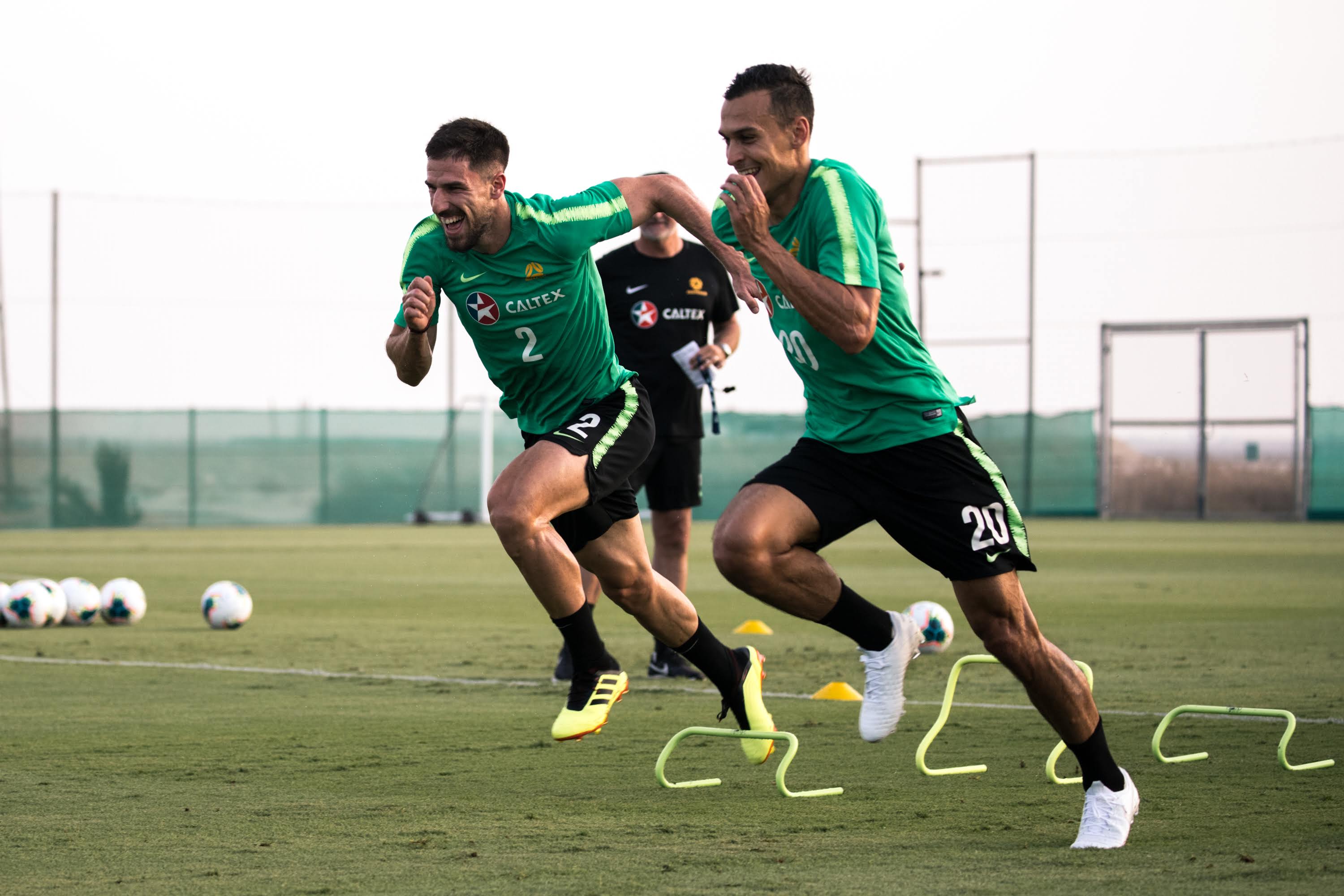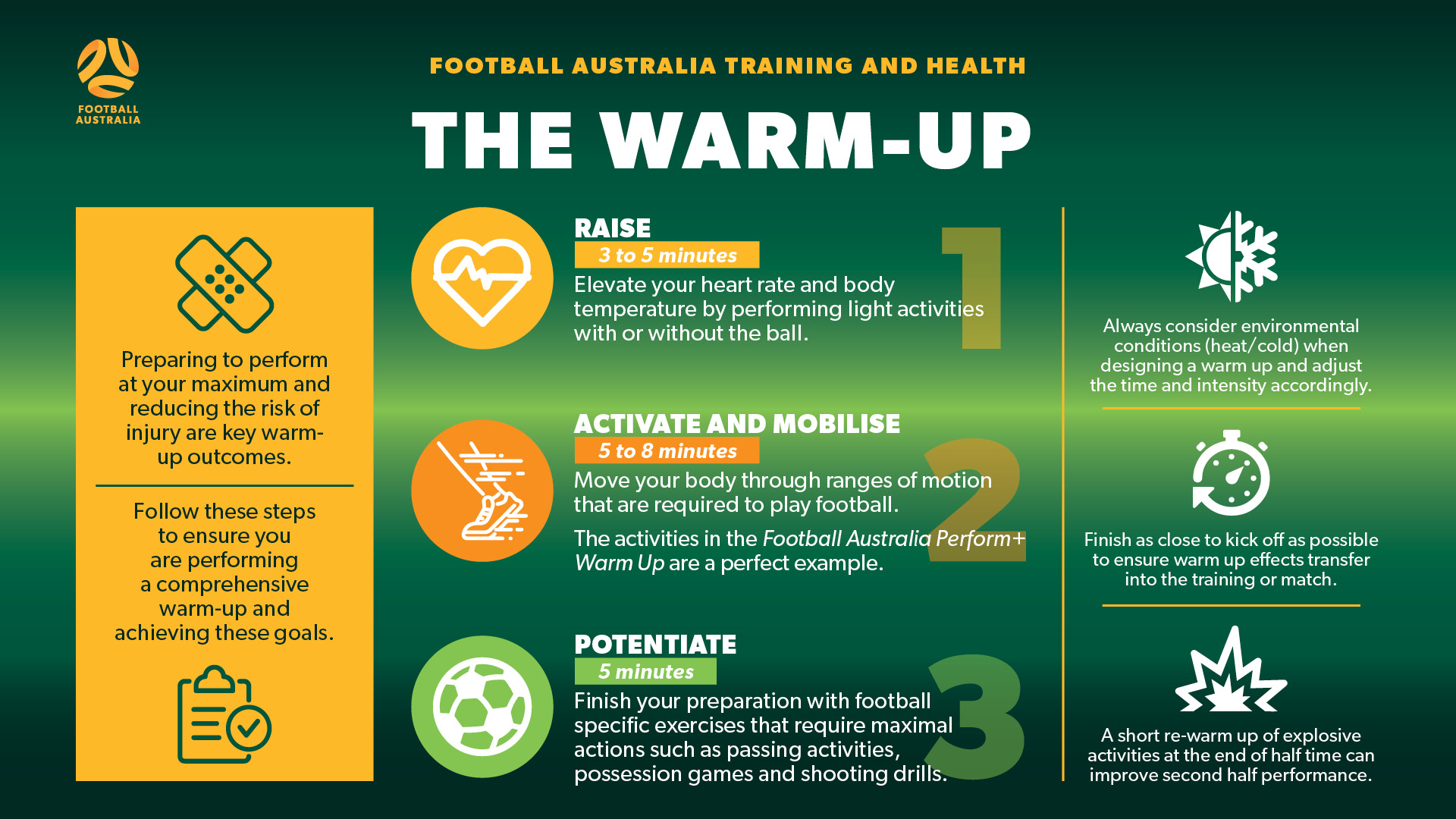THE WARM-UP
Active warm-ups are widely used in all sports and are a core component of professional footballers’ training and match-day routines. They can vary considerably in duration, content and physiological effect and it is important for you to consider the purpose of warming up to maximise its benefits.

A good warm-up should achieve three key goals: improving physical performance in a match or training session, reducing the risk of sustaining an injury and preparing mentally for the tasks ahead.
Select the dropdowns below to learn more about these goals:
There is strong scientific evidence suggesting that a well structured warm-up incorporating light aerobic activities, dynamic stretching and sport specific exercises improves many areas of performance, including running, jumping and kicking [1]. Several mechanisms by which warming up may help improve performance have been proposed, most prominently perhaps are the physiological changes caused by an elevation in muscle temperature and increased blood flow to working muscles [1].
Warm-ups are an ideal opportunity to implement basic injury prevention work, including strengthening, mobility and balancing exercises. When such exercises are repeated regularly and consistently they can have a tremendous effect on reducing the amount of non-contact injuries, e.g. muscle strains, ankle sprains and tendon tears, suffered over the course of a season. Warm-up and injury prevention programs such as the Football Australia Perform+ have been shown to dramatically reduce injury rates in scientific research [2, 3] and can be incorporated into any team practice via easy to follow guides.
Warm-ups are vital in preparing you physically but should also be used to sharpen your focus on the match or training session ahead. Technical skills such as passing, controlling the ball and shooting should be rehearsed to allow you to feel comfortable before kick-off. Passing or possession drills utilised in the warm-up can emphasise tactical concepts that are important for the upcoming task.
The specific content of your warm-up should be adjusted to environmental conditions, the needs of individual players (your teammates) and the session or match ahead. The structure of your warm-up however should always follow the pattern described in the infographic below.

The Football Australia FUNdamentals and Perform+ programs are easy to follow warm-up routines that have been proven to increase performance while decreasing injury risk [2]. They will benefit you regardless of the level you play at.
Suggested Reading
- The Science for Sport website discusses warm-ups in professional sport and provides a practical model to follow.
- Ryan Parker describes the RAMP warm-up protocol for Human Kinetics and adds valuable detail.
References
- A. J. Fradkin, T. R. Zazryn and J. M. Smoliga, “Effects of Warming-Up on Physical Performance: A Systematic Review With Meta-Analysis,” Journal of Strength and Conditioning Research, vol. 24, no. 1, pp. 140-148, 2010.
- D. Sadigursky, J. A. Braid, D. N. L. De Lira, B. A. B. Machado, R. J. F. Carneiro and P. O. Colavolpe, “The FIFA 11+ injury prevention program for soccer players: a systematic review,” BMC Sports Science, Medicine and Rehabilitation, vol. 9, no. 18, 2017.
- K. Thorborg, K. K. Krommes, E. Esteve and M. B. Clausen, “Effect of specific exercise-based football injury prevention programmes on the overall injury rate in football: a systematic review and meta-analysis of the FIFA 11 and 11+ programmes,” British Journal of Sports Medicine, vol. 51, p. 562–571, 2017.


